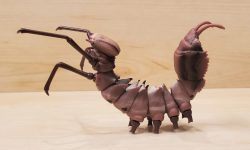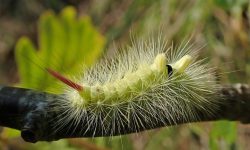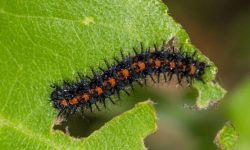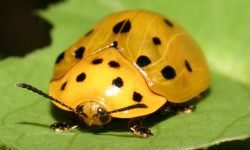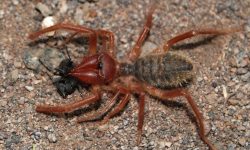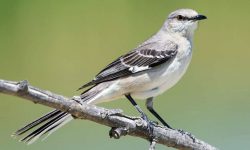Italy, with its diverse landscapes, offers a rich canvas for nature’s artistry, and among its most enchanting residents are the butterflies that grace its skies. The butterflies of Italy form a kaleidoscope of colors, patterns, and ecological significance, contributing to the country’s vibrant biodiversity.
Explore this article to learn about 35 different species of butterflies that can be found in Italy, along with pictures and identification tips.
Different types of Butterflies in Italy
Common Blue (Polyommatus icarus)
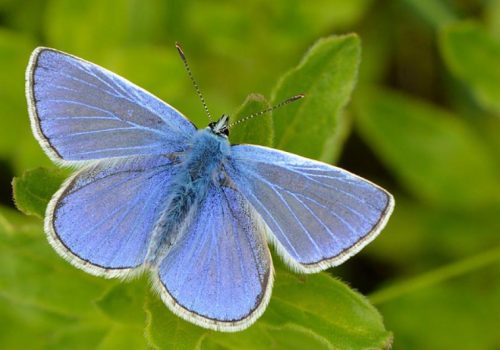
The Common Blue, a captivating butterfly found throughout Italy, boasts vibrant blue wings. Thriving in diverse habitats, from grasslands to urban areas, it enchants with its striking appearance—males flaunt bright blue upper wings, while females display brownish wings with a hint of blue. With a wingspan of 30-35mm, these small butterflies, feeding on nectar from thistles and clovers, reproduce twice a year, completing their life cycle in 3-4 weeks. Host plants, including bird’s-foot trefoil and clover, sustain their development.
Adonis Blue (Polyommatus bellargus)
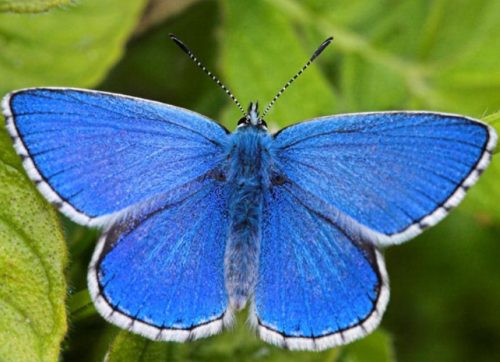
The Adonis Blue, a captivating butterfly in Italy, thrives in sunny chalky grasslands. Males flaunt dazzling blue wings, while females sport brown with orange crescents. With a wingspan of 30-40mm, these small to medium-sized butterflies feed on nectar from plants like marjoram and thyme. Their short week-long lifespan unfolds amid the host plant, horseshoe vetch. Appreciating these details enhances the allure of the Adonis Blue for butterfly enthusiasts.
Painted Lady (Vanessa cardui)
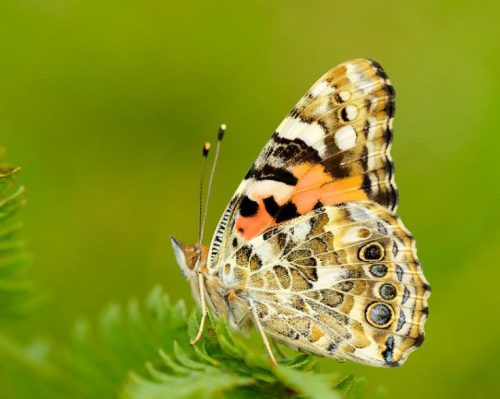
The Painted Lady, a widespread butterfly in Italy, is renowned for its migratory prowess. In gardens, meadows, and woodlands, it stands out with orange wings adorned with black and white tips. With a 5-9 cm wingspan, it’s medium-sized, feeding on nectar and laying around 500 eggs per lifetime. Thriving on thistles, mallows, and nettles, this adaptable species captivates both enthusiasts and casual observers in Italy’s diverse habitats.
Red Admiral (Vanessa atalanta)
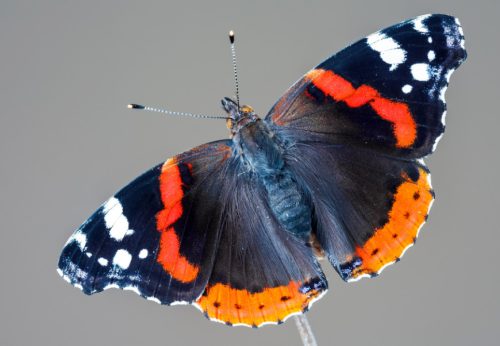
The Red Admiral, a stunning butterfly native to Italy, showcases vibrant colors and widespread adaptability. With a 45-50 mm wingspan, it thrives in woodland edges, parks, and gardens, feeding on nectar from thistle and aster. Their life cycle, from single eggs on nettle leaves to vibrant butterflies, unfolds in about four to five weeks. The common nettle serves as a primary host, contributing to the Red Admiral’s resilience and vibrant presence in Italian landscapes.
Comma (Polygonia c-album)
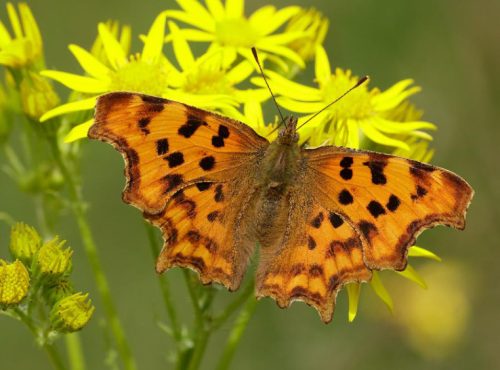
The Comma, a captivating butterfly in Italy, entices with jagged wing edges and a distinctive ‘C’ marking. Thriving in gardens and woodlands, it displays intricate patterns in orange, brown, and black, resembling fallen leaves. With a 45-55mm wingspan, it feeds on thistles and nettles, undergoing two generations each year. Recognizing its short 2-3 week lifespan adds to the allure of encountering this remarkable species in Italy’s outdoors.
Silver-washed Fritillary (Argynnis paphia)
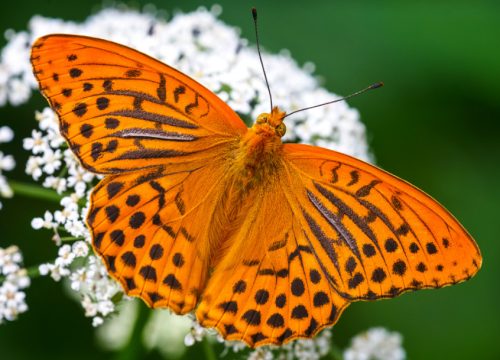
The Silver-washed Fritillary, or Argynnis paphia, native to Italy, boasts vibrant orange wings adorned with dark markings. In deciduous woodlands and clearings, it thrives with a 54-70mm wingspan. Adults feed on thistles, while caterpillars munch on violet leaves. Their 2-3 week lifespan unfolds in the wild, adding allure to your woodland walks in Italy.
Peacock (Aglais io)
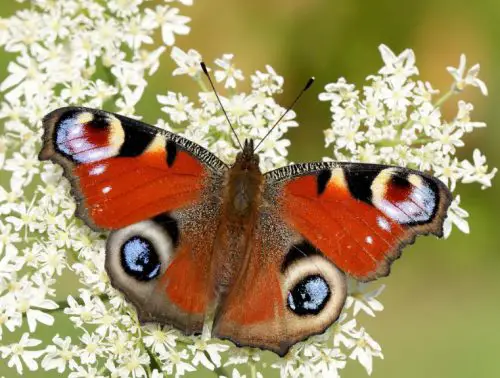
The Peacock butterfly, a vibrant species in Italy, graces woodland edges, meadows, gardens, and parks. With a wingspan of 5-6 centimeters, its upper wings boast a striking combination of red, blue, yellow, and black, mimicking a peacock’s feathers. These long-lived butterflies, with a lifespan of up to 11 months, lay eggs on stinging nettles and occasionally hops, contributing to their enchanting presence in Italy’s diverse landscapes.
Speckled Wood (Pararge aegeria)
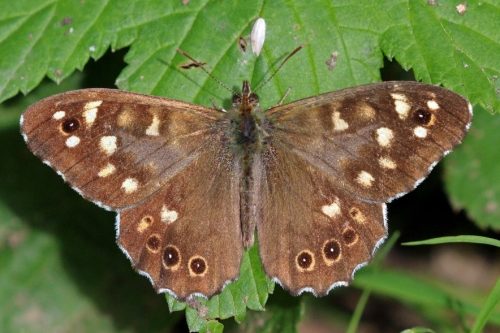
The Speckled Wood butterfly, a captivating presence in Italy, thrives in wooded areas and diverse environments, showcasing brown wings with cream-colored markings and speckles. With a 4-4.4 cm wingspan, it feeds on honeydew, nectar, and occasionally rotting fruit. Two to three generations per breeding season lay eggs on various grasses in the Poaceae family. Adult butterflies, living for about a month, contribute to Italy’s rich butterfly diversity.
Scarce Swallowtail (Iphiclides podalirius)
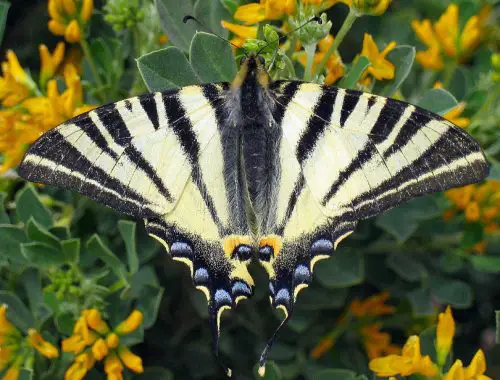
The Scarce Swallowtail, a majestic butterfly in Italy’s skies, thrives in warm, open areas like meadows and orchards. With a wingspan of 8-10 cm, it displays striking black and white patterns, adorned with blue and red spots. Feeding on thistle, scabiosa, and lavender, its 3-4 week adult lifespan unfolds amidst pear and cherry trees, the preferred host plants for its larvae. Encountering the Scarce Swallowtail in Italy is a magical experience, adding natural beauty to your exploration.
Holly Blue (Celastrina argiolus)
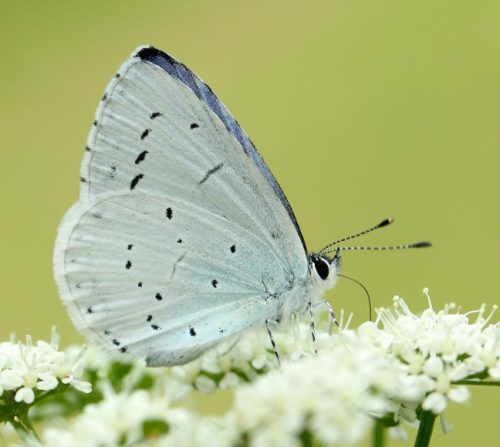
The Holly Blue, a charming butterfly in Italy, frequents woodlands, hedgerows, and gardens. With delicate blue hues, males flaunt vibrant colors, while females have a broader black border. Their small size, 24-35mm wingspan, makes them easily recognizable. Feeding on floral nectar and laying eggs on holly and ivy, these butterflies have two broods per year, contributing to their presence in Italy’s diverse landscapes.
Small Heath (Coenonympha pamphilus)
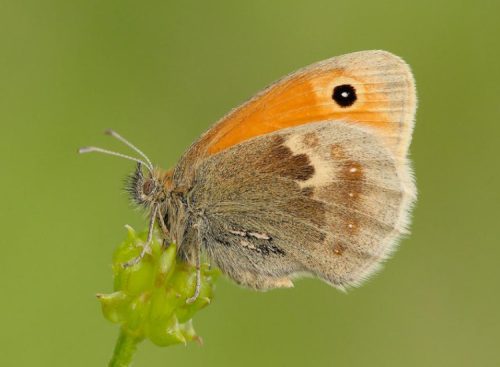
The Small Heath, a captivating butterfly in Italy, graces grasslands and meadows with its warm orange-brown wings adorned with delicate patterns. With a modest 25-30 mm wingspan, it feeds on nectar from flowers like clovers and daisies. Mating in summer, females lay eggs on host plants, and their life cycle, including the larval stage, spans a couple of weeks to a month. Caterpillars thrive on grass species such as sheep’s fescue and meadow foxtail.
Marbled White (Melanargia galathea)
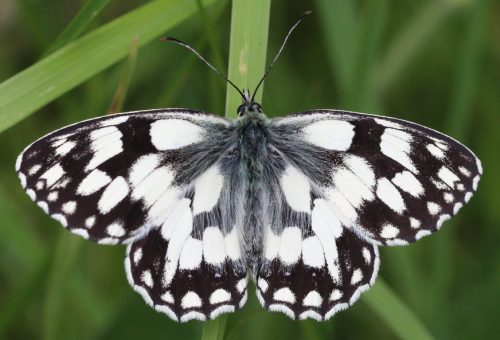
The Marbled White, a captivating butterfly native to Italy, graces meadows, chalk downs, and woodland clearings with its unique black and white wing pattern resembling marbled design. With a 3.4-4.8 cm wingspan, they feed on nectar from purple flowers like thistles and knapweeds. Their enchanting aerial mating ritual and the subsequent egg-laying on grass leaves contribute to their mesmerizing presence. Adult Marbled Whites, with a lifespan of around two weeks, emerge after a three to four-week pupal period. Caterpillars thrive on various grasses, particularly red fescue and sheep’s fescue.
Meadow Brown (Maniola jurtina)
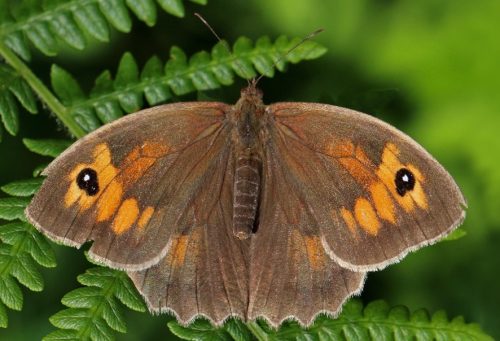
The Meadow Brown, a widespread butterfly in Italy, thrives in grasslands, meadows, and open spaces. With brown wings, males display circular black-bordered eye spots, while females boast orange patches along wing edges. Medium-sized with a 33-55mm wingspan, they feed on thistle and knapweed flowers. Reproducing in early summer, females lay eggs on grass blades, and caterpillars emerge after two weeks, feeding on grasses. The entire life cycle takes about one year, and adults live for around two weeks. Grasses like fescue and meadow grasses serve as host plants, sustaining the caterpillars.
Southern White Admiral (Limenitis reducta)
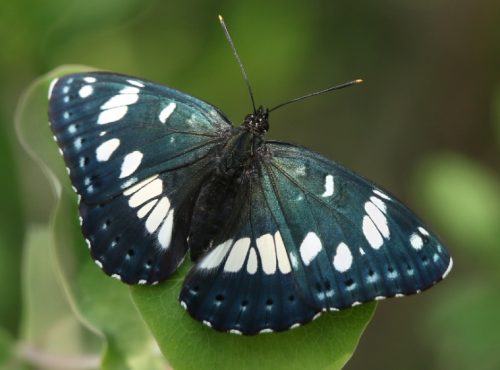
The Southern White Admiral, a captivating butterfly in Italy, thrives in sunny wooded areas, oak and hornbeam forests, and Mediterranean scrubland. With a 60-70 mm wingspan, its upper wings showcase dark brown with white bands, while the underside features a pale, creamy color with brown markings and blue eyespots. Feeding on flower nectar and honeysuckle leaves, its average adult lifespan is around 20 days, with a complete life cycle lasting approximately two months. Various types of honeysuckle serve as preferred host plants for this remarkable species.
Small Copper (Lycaena phlaeas)
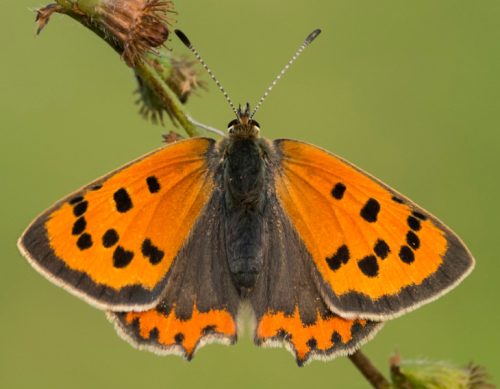
The Small Copper butterfly, a vibrant sight in Italy, thrives in sunny meadows, fields, gardens, and heathland. With a 30-35 mm wingspan, it flaunts metallic orange upper wings with a bold black border and brownish-gray undersides with black spots. Feeding on nectar from thistles, daisies, and brambles, these butterflies undergo two or three generations yearly, laying eggs on host plants. Their adult lifespan is around three to four weeks, and the overall lifecycle spans several months. Larvae primarily feed on sheep’s sorrel and common sorrel. Keep an eye out for this vibrant species on your next Italian adventure!
Duke of Burgundy (Hamearis lucina)
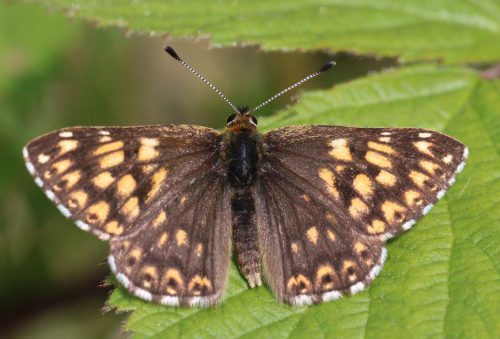
The Duke of Burgundy butterfly, native to Italy, graces woodland clearings, scrubby grasslands, and flowery meadows on limestone-rich soils. With a wingspan of 29-34mm, it flaunts orange-brown wings with black spots and intricate green-gray patterns on the hindwing’s underside. Adults feed on flower nectar, while caterpillars munch on Primula leaves. A single female can lay around 100 eggs on host plants like cowslip and primroses. Their adult stage lasts about three weeks, contributing to the unique beauty and ecological balance of Italy’s landscapes.
White Admiral (Limenitis camilla)
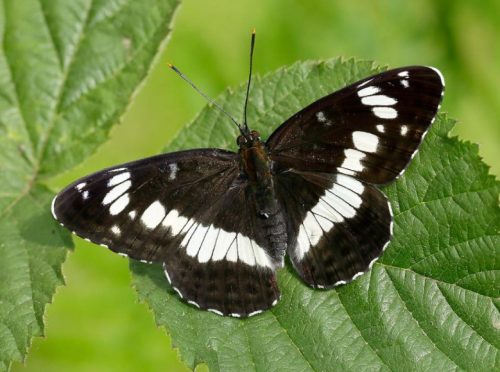
The White Admiral, a captivating butterfly in Italy, thrives in deciduous woodlands with abundant host plants. With a wingspan of 6-6.5 cm, it flaunts dark wings with distinctive white bands and intricate patterns on the undersides, adorned with eye-catching blue accents. Feeding on aphid honeydew and nectar from bramble, thistles, and knapweed, these butterflies have a single generation yearly, with mating and egg-laying in summer. The adult stage lasts about 3 weeks, and honeysuckle serves as the primary host plant for their larval stage, contributing to the unique beauty of Italy’s natural landscapes.
Short-tailed Blue (Cupido argiades)
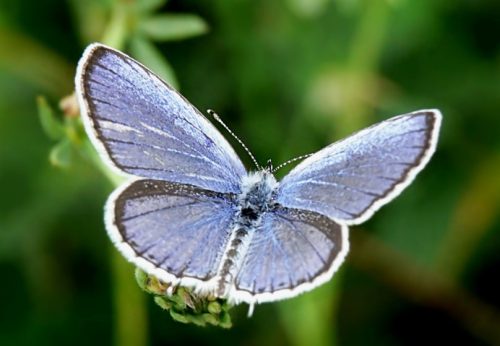
The Short-tailed Blue, a charming butterfly in Italy, thrives in meadows, grasslands, and woodland clearings, as well as gardens and parks. With a wingspan of 22-27 millimeters, it showcases bright blue wings with a distinctive white fringe and a short tail on the hind wing. Feeding on flower nectar, their courtship display and mating last about 30 minutes, followed by egg-laying on suitable host plants. The average lifespan is around 3 to 4 weeks, and larvae contribute to the ecosystem by feeding on plants like clover, alfalfa, and vetch. Understanding their habitat and life cycle enhances our appreciation for the Short-tailed Blue in Italy’s diverse landscapes.
Heath Fritillary (Melitaea athalia)
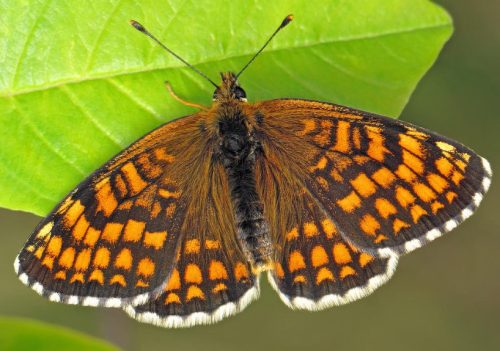
The Heath Fritillary, a captivating butterfly in Italy, thrives in grasslands, heathlands, and open woodlands, preferring sunny spots for sunbathing. With a 32-42mm wingspan, it displays a stunning wing pattern of orange and brown hues with black markings. Nectar-loving adults feed on plants like thistles, scabious, and knapweed. Mating occurs in the afternoon, followed by egg-laying on the underside of host plant leaves. The average adult lifespan is 2-4 weeks, and their complete life cycle from egg to adult spans about 7-8 weeks. Favorite host plants include cow-wheat and ribwort plantain, sustaining their larvae.
Dark Green Fritillary (Speyeria aglaja)
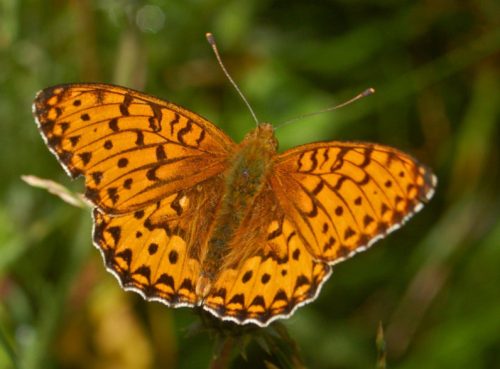
The Dark Green Fritillary, a captivating butterfly in Italy, thrives in various habitats like grasslands, meadows, forest clearings, and coastal dunes. With a wingspan of 5-6.5 centimeters, it boasts a dark green underwing with silver spots and bright orange upper wings with black markings. Feeding on thistles, knapweed, and scabious, adults contribute to the ecosystem’s biodiversity. Mating in summer, females lay eggs on violets, and the entire life cycle takes about a year. Marsh violet and dog violet are crucial host plants for their caterpillars. Explore Italy’s landscapes and spot these fascinating Dark Green Fritillaries.
High Brown Fritillary (Fabriciana adippe)
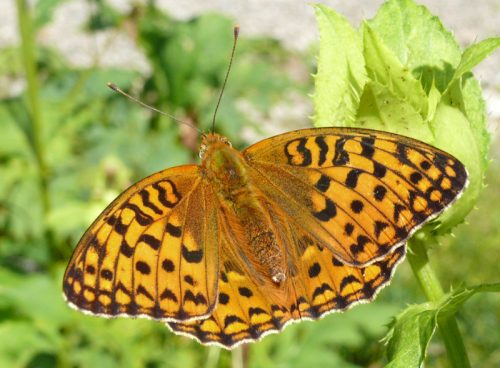
The High Brown Fritillary, scientifically known as Fabriciana adippe, is a captivating butterfly found in Italy. Preferring warm clearings in woodlands and meadows, they showcase a beautiful combination of brown and orange wings with black spots. With a medium-sized wingspan of 50-65 mm, they primarily feed on nectar from flowers like thistles and brambles. Their short adult lifespan of a few weeks and reliance on violets as host plants for their larvae make them a truly remarkable species in Italian landscapes.
Large Tortoiseshell (Nymphalis polychloros)
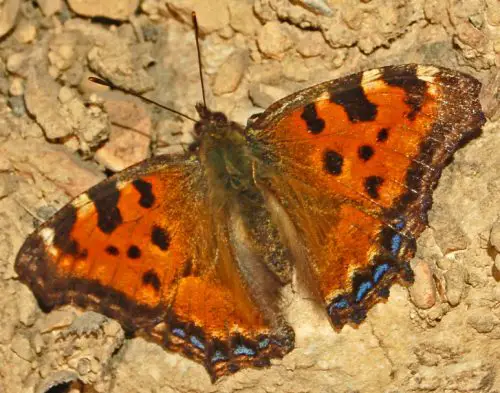
The Large Tortoiseshell, a captivating butterfly found in Italy, thrives in deciduous woodlands, orchards, parks, and gardens. Recognizable by its vibrant orange forewing, black markings, and blue spots on the hindwing, it boasts a wingspan of 68-80 mm. While adults feed on nectar, caterpillars consume leaves of host plants like elm and fruit trees. Females lay eggs on these plants, and their lifespan ranges from weeks to months, influenced by environmental factors. Keep an eye out for this remarkable species during your explorations of Italy’s landscapes.
Purple-shot Copper (Lycaena alciphron)
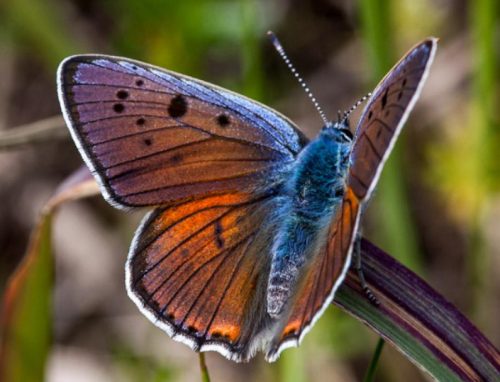
The Purple-shot Copper, a captivating butterfly in Italy, thrives in meadows, forest clearings, and grassy areas. Males boast bright purple iridescent markings on copper upper wings, while females exhibit bronze-brown wings with orange markings. With a wingspan of 25-35 millimeters, they are medium-sized butterflies. Feeding on nectar from various flowers, adults lay single eggs on or near host plants, usually sorrel and dock. The butterfly’s short adult lifespan of 2-3 weeks contrasts with its entire life cycle, spanning over a year. Explore Italy’s natural beauty to witness this remarkable butterfly.
Clouded Yellow (Colias croceus)
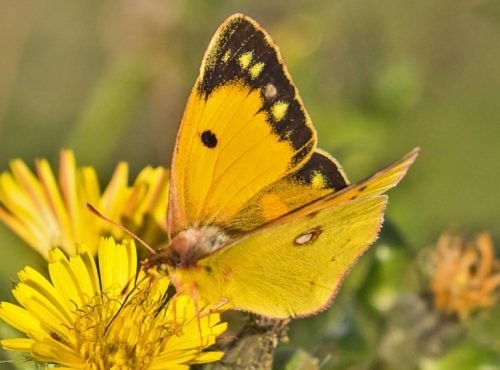
The Clouded Yellow, or Colias croceus, is a native Italian butterfly known for its vibrant yellow wings with black edges and distinctive markings. Found in open grasslands, meadows, gardens, and fields, this medium-sized butterfly, with a wingspan of 60-75 mm, adds a burst of color to sunny landscapes. Feeding on nectar from various flowers and laying eggs on host plants like wild mustard and common clover, the Clouded Yellow is a captivating sight during its brief three-week adult lifespan. Keep an eye out for this charming butterfly on your Italian adventures.
Brimstone (Gonepteryx rhamni)
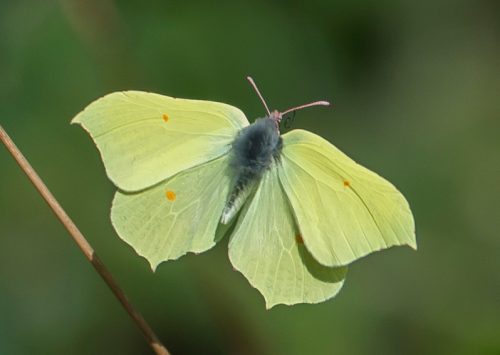
The Brimstone butterfly, native to Italy, graces open spaces like meadows and gardens with its vibrant presence. Recognizable by its distinctive yellow-green wings, this medium-sized species, with a wingspan of 50-55 mm, brings a dash of color to the landscape. Feeding on nectar from various flowers as adults and consuming buckthorn and alder buckthorn leaves as caterpillars, Brimstones play a vital role in Italy’s biodiversity. Keep an eye out for these captivating butterflies during your Italian explorations!
Green-veined White (Pieris napi)
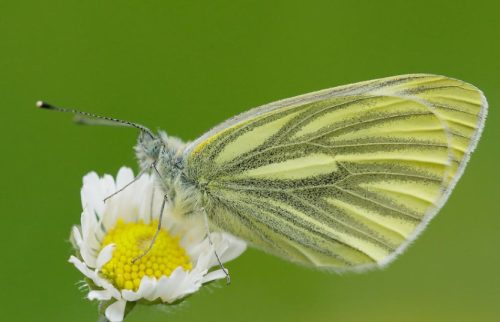
The enchanting Green-veined White butterfly is a frequent visitor in Italy, gracing various habitats from damp grasslands to gardens. Its delicate white wings, adorned with green veins, contribute to Italy’s natural beauty. These adaptable butterflies, vital for biodiversity, display a wingspan ranging from 4 to 5.5 cm. Take time to explore and appreciate their presence in meadows and clearings during your Italian journey.
Small White (Pieris rapae)
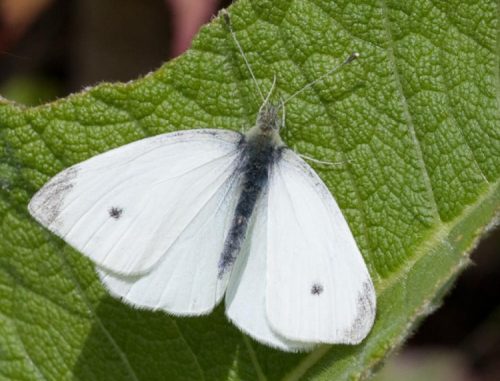
The Small White, or Small Cabbage White, is a common butterfly in Italy, thriving in gardens, parks, and meadows. Recognized by its white wings with black tips, these butterflies have a wingspan of 3.2 to 4.6 cm. Caterpillars feed on cruciferous plants like cabbage, while adults enjoy nectar from flowers. The Small White’s life cycle spans around three weeks as an adult.
Large White (Pieris brassicae)
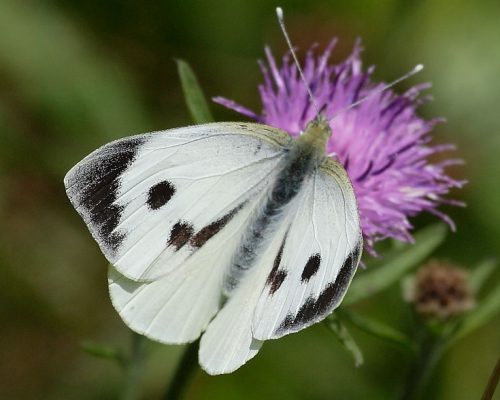
The Large White, or Cabbage White, is a widespread butterfly in Italy, recognized for its white wings with black tips. Found in gardens and farmlands, these butterflies have a wingspan of 5 to 7 centimeters. Their life cycle, from egg to adult, takes about 6 weeks, and they primarily rely on Brassica plants like cabbage for nutrition. Adult Large Whites feed on flower nectar and live for 2-3 weeks.
Orange Tip (Anthocharis cardamines)
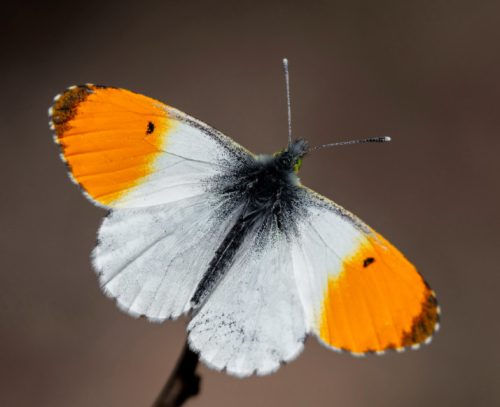
The Orange Tip, a vibrant butterfly, adds a burst of color to Italy’s landscapes during spring. Males showcase striking orange wingtips, while females exhibit a subtler off-white. Found in grasslands and meadows, they feed on nectar and lay eggs on Brassicaceae plants like garlic mustard. With a wingspan of 35-55 mm, these medium-sized butterflies have a year-long lifespan, from egg to adult. Enjoy spotting these charming butterflies as they contribute to the beauty of Italy’s natural surroundings.
Swallowtail (Papilio machaon)
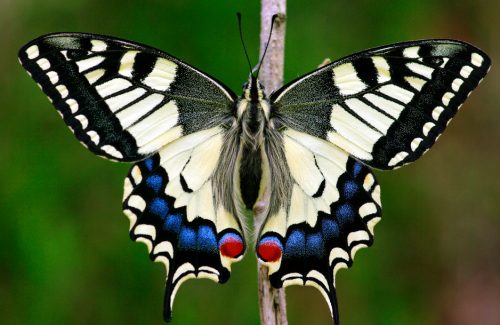
The Swallowtail, a captivating butterfly in Italy, exhibits vibrant colors and patterns. With its distinct appearance and adaptability to various environments, this species is a natural beauty. Recognizable by its striking yellow and black wings with blue, red, and orange accents, the Swallowtail has a wingspan of 3-4 inches. In its adult stage, it feeds on nectar from flowers like milkweed and thistles. The females lay eggs on host plants such as fennel and parsley, and the entire life cycle lasts 1 to 4 weeks. Encounter the Swallowtail in open meadows, gardens, and woodlands, appreciating its unique traits and contribution to Italy’s biodiversity.
People Who Read This Also Read:

